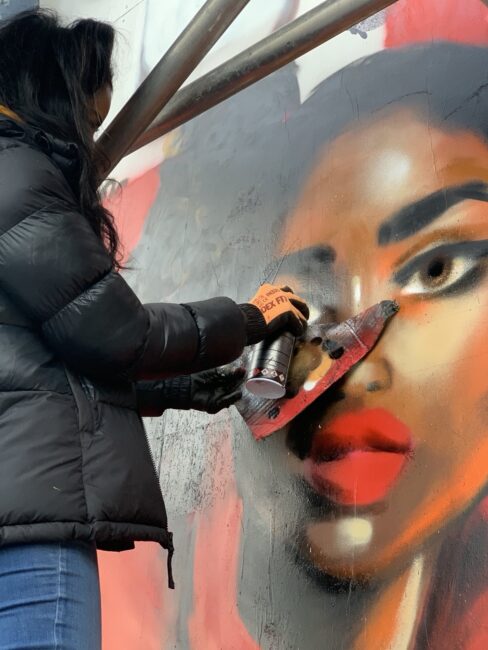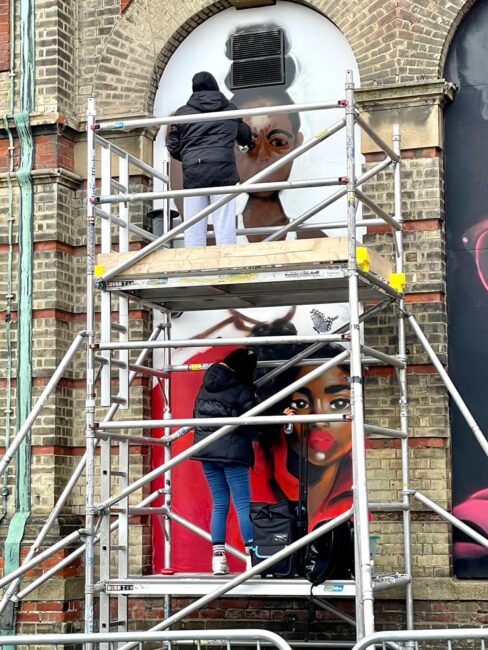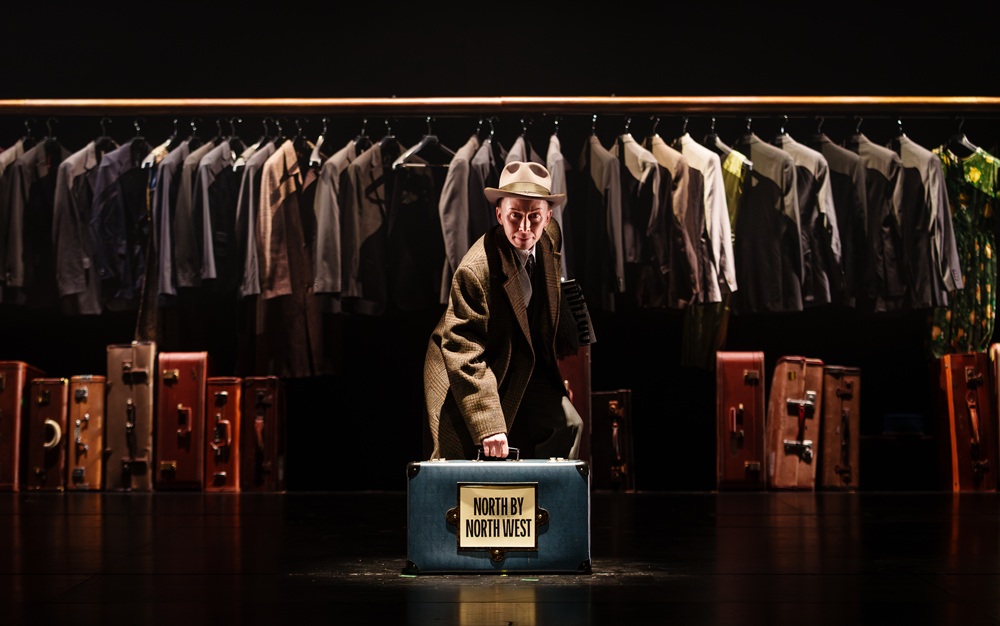In celebration of International Women’s Day, artists Jelly and Alethea from the WOM Collective have come together to create a joint mural at the Palace, called Black Swans. Jelly and Alethea explain more…
Can you tell us a little bit about yourselves for those out there who might be unfamiliar with you and your work?
Jelly: I’m a London based street artist. I’m known for painting colourful, feminine figures with supersized eyelashes and positive slogans such as You are Enough. Themes of empathy, love and self-worth reflect my intersectional experience as a disabled woman of colour. My mural style is influenced by music, fashion and rave culture and can be found around the city, but also on commissioned walls and establishments, community projects and collaborations.
Alethea: I’m an artist who is the product of the pandemic. I’m a full-time lawyer but did an online art workshop with one of the founding members of the WOM Collective and rekindled my ability to paint and draw after 30 years! I’m gradually gaining confidence and inspired by the incredibly talented women I’ve met on my art journey.

( Jelly J Artist and Alethea Art)
Tell us about the mural you’ve created at Ally Pally and the inspiration behind it?
A: In celebration of international women’s day, the WOM Collective thought of the idea to have a mural trail around London, so that the public can see work from female artists celebrating women. It was difficult to think about where we all could find legal walls that wouldn’t be painted over during the month of March, but I approached Ally Pally about it and they were excited as we are.
J: We’ve done a collaborative piece at Ally Pally. Alethea had the idea of painting a black ballerina to highlight underrepresentation in this historically elitist field. Racial discrimination has not only resulted in them being ostracised from getting jobs, but also being underpaid next to their white counterparts. My work often has a street vibe, hence the adidas b-girl ballerina.
How does your mural fit in with the city-wide trail?
J: The WOM Mural Trail aims to represent women in street art. Over 30 pieces have been created around London by incredible artists in the collective. But I believe intersectional representation is important and so myself and Alethea also portray black and brown women in our work.
A: A lot of the art on the trail features women, and Jelly and I like to represent black and brown women in our art, so it adds another dimension visually and representation wise.
Can you tell us about how the city inspires you and whether there’s anything different/special working at about Ally Pally?
J: The cultural diversity, character and landscape of London inspires me every day. We have graffiti tunnels, modern architecture, social housing and beautiful parks in the same space unlike the ghettoes of other cities, but it can be bitter sweet. We have the highest rate of childhood depression and anxiety ever, and with social media telling them to be a certain way, it’s especially important for children to have positive messages in their environment. It can simply be artwork that makes them feel good or just because they like the colours. I aim to also create this energy at Ally Pally, I’ve been here for a couple of festivals but it’s wonderful to now be painting, not just dancing at this iconic building.
A: I’m new to street art but always been a fan and whereas before I’d take photos of street art, I’m now participating in it. Street art is everywhere in London and you can be inspired by small pieces that most people walk past everyday and not even notice. Ally Pally is where I live, walk, run and socialise so to be able to share my art at an iconic venue in London is a fantastic honour.

( Johanna Urschel)
The last 18 months or so have massively impacted the art world – how did you cope with that?
A: The last 18 months has been an inspiration rush! Exploring different areas in London and beyond has enabled me to see more and appreciate the talents of others and how it has brought positivity at a difficult time in all of our lives.
J: I actually emerged from lockdown happier and more fulfilled. I was shielding alone and at first I missed everyone. But I took part in lots of fun virtual live painting collaborative events which made me feel connected. Having had a lifetime of debilitating autoimmune chronic illnesses, I’ve always felt that no matter what situation arises in life, you always have the choice how you deal with that situation. Survival, I guess. The stillness of lockdown and turning off the noise – as in, no mass media was a lightbulb moment. I moved my energy onto positive spaces and created loads of art. When there’s too much noise we are like hamsters on a treadmill frantically going nowhere fast, our true selves can’t flourish which is paralysing to our mental well-being. I do love how people on the ‘outside’ walked more and with everything closed, noticed street art more and appreciated the messages and beauty we create around the city.
Any advice you’d like to share with fellow creatives?
J: Turn off the noise and don’t worry about what everyone else is doing. Find your purpose and follow your own path and do what brings you happiness even if it means living simply. Also spread love, sounds corny but if you have love for yourself and others you will find it harder to fall in life.
A: don’t be afraid to show your work. Practice, experiment and believe in yourself.

( Jelly J Artist and Alethea Art)
Head to Instagram to discover more work by Jelly J Artist and Alethea Art.





